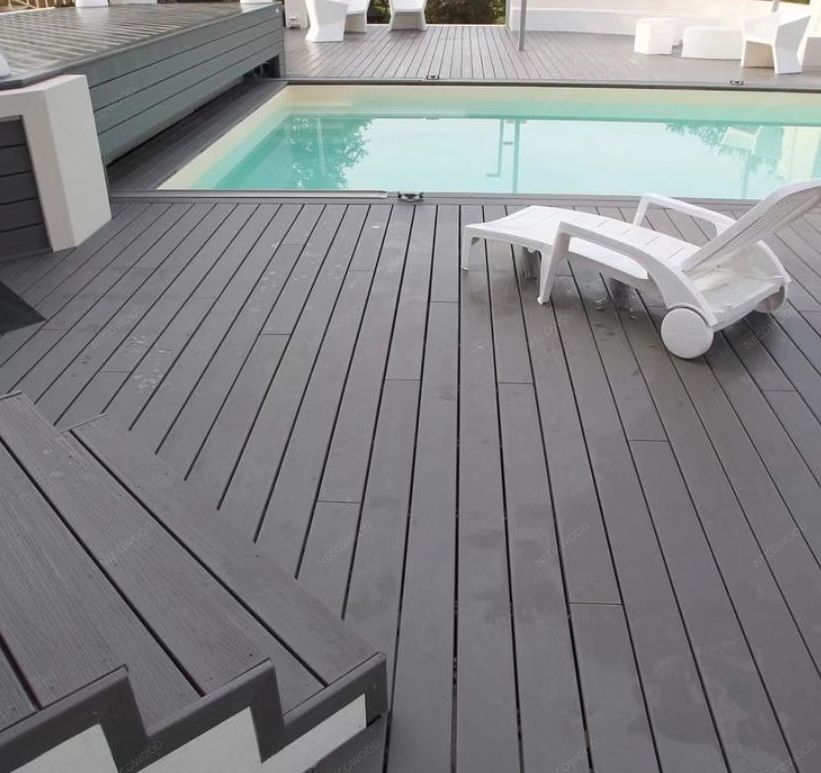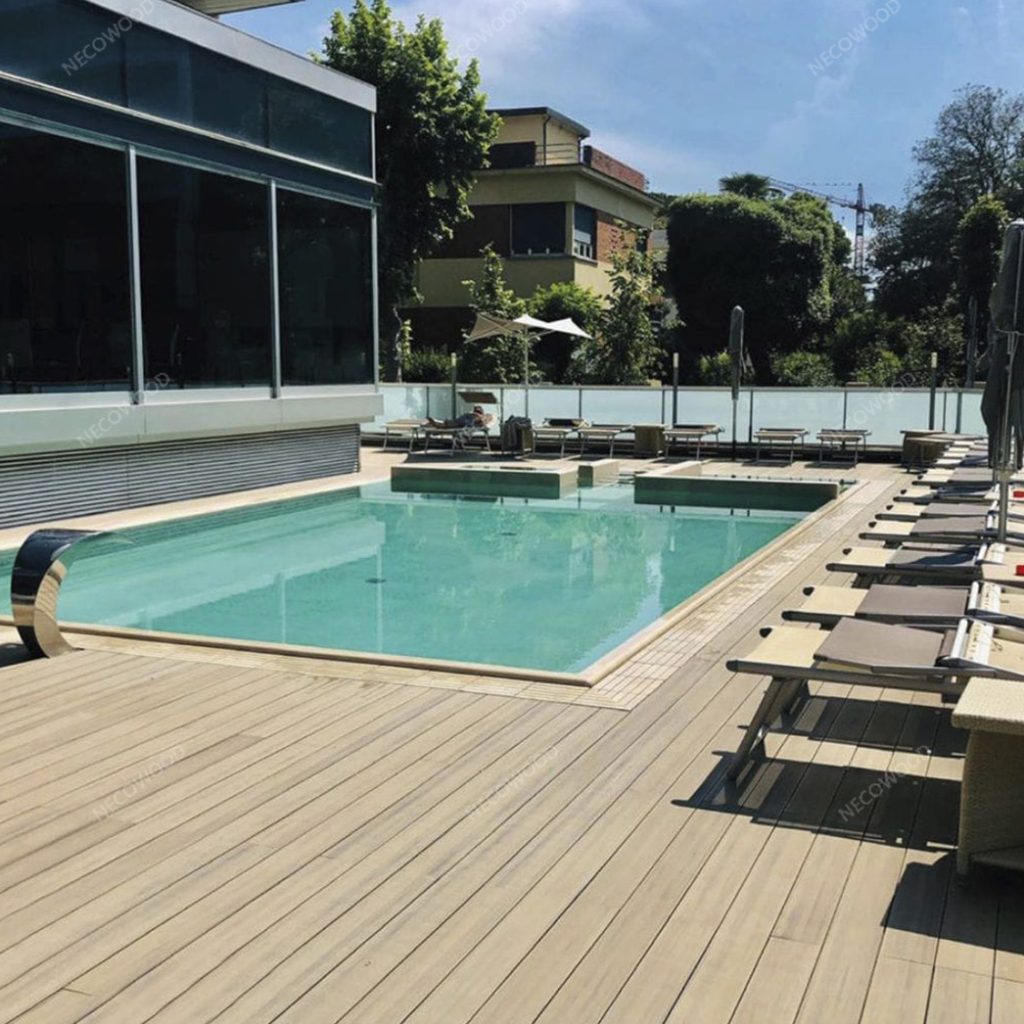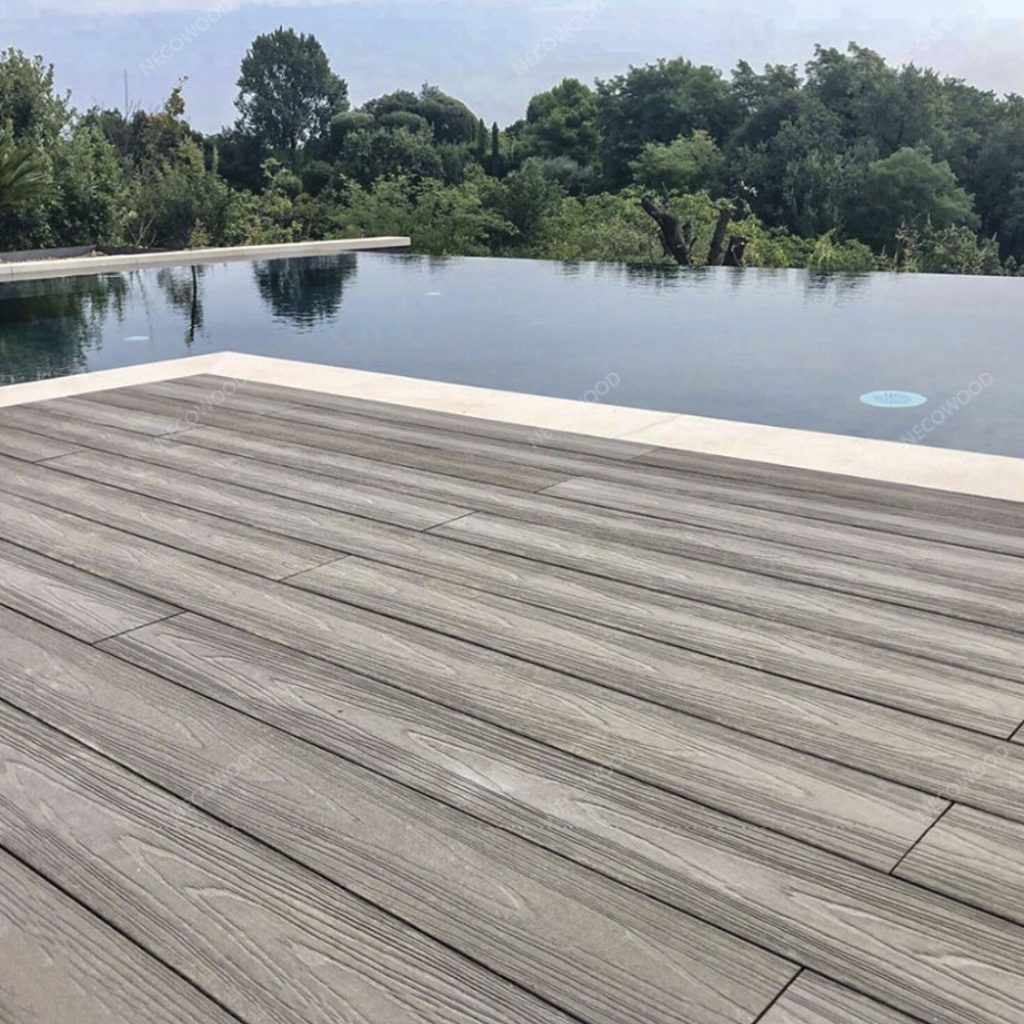As the summer sun beats down, outdoor swimming pools emerge as a favored haven for people seeking respite from the heat. Amidst the splashes and laughter, one crucial element often overlooked is the flooring surrounding these aquatic retreats. Far from being merely a decorative feature, poolside flooring plays a pivotal role in ensuring safety and enhancing the overall experience.

The Drawbacks of Traditional Pool Decking
Traditional materials like ceramic tiles and natural stone have long been popular choices for outdoor swimming pool floors. However, their inherent limitations become glaringly apparent in wet environments. When exposed to water, the smooth surfaces of tiles and stone lose much of their traction, significantly increasing the risk of slips and falls. A recent study in the Journal of Safety Research found 60% of poolside accidents were directly attributed to slippery flooring.
Beyond safety concerns, traditional flooring also struggles to withstand the harsh outdoor elements. Prolonged exposure to UV rays causes tiles to fade, while the constant cycle of wetting and drying leads to cracking and chipping. In coastal areas, the corrosive effects of saltwater further degrade the materials, resulting in costly repairs and frequent replacements.




The Rise of Innovative Pool Decking Solutions
In response to these challenges, the market has witnessed a surge of innovative flooring materials designed specifically for outdoor pool areas. Two standouts in this category are rubber flooring and wood-plastic composite WPC flooring, each offering unique advantages.
Traditional materials like ceramic tiles and natural stone have long been popular choices for outdoor swimming pool floors. However, their inherent limitations become glaringly apparent in wet environments. When exposed to water, the smooth surfaces of tiles and stone lose much of their traction, significantly increasing the risk of slips and falls. A recent study in the Journal of Safety Research found 60% of poolside accidents were directly attributed to slippery flooring.
Beyond safety concerns, traditional flooring also struggles to withstand the harsh outdoor elements. Prolonged exposure to UV rays causes tiles to fade, while the constant cycle of wetting and drying leads to cracking and chipping. In coastal areas, the corrosive effects of saltwater further degrade the materials, resulting in costly repairs and frequent replacements.
Rubber Flooring: The Epitome of Safety and Durability
Rubber flooring has emerged as a top choice for modern pool designers, thanks to its exceptional slip-resistance. Engineered with a textured surface, rubber flooring maintains a firm grip even when saturated, reducing the likelihood of accidents. The material’s flexibility also provides a cushioned landing, minimizing the impact of falls and reducing the risk of serious injuries.
But safety is just the beginning. Rubber flooring is highly resistant to water, mold, and mildew, making it ideal for the humid poolside environment. It is also resistant to UV rays, ensuring vibrant colors and patterns remain intact for years. Additionally, rubber flooring is easy to clean and maintain, requiring only regular sweeping and occasional mopping.
Wood-Plastic Composite WPC Pool Decking: A Blend of Beauty and Performance
For those seeking a more natural aesthetic, WPC flooring offers the perfect solution. Combining the warmth of wood with the durability of plastic, WPC flooring replicates the look of real wood without associated maintenance issues. It is impervious to water, resistant to warping and rotting, and can withstand extreme temperature fluctuations.
The surface of WPC flooring is designed with anti-slip features, providing reliable traction in wet conditions. Its resistance to scratches and stains makes it a practical choice for high-traffic areas. Moreover, WPC flooring is environmentally friendly, made from recycled materials and requiring no harmful chemicals for installation or maintenance.
Real-World Success Stories
Numerous establishments have already reaped the benefits of upgrading their pool flooring. The luxurious Azure Resort in Bali replaced its aging tile flooring with rubber flooring, achieving a 75% reduction in slip-and-fall incidents within the first year. The resort also reported significant savings on maintenance costs, as rubber flooring requires minimal upkeep.
In another instance, a private residential pool in California transformed with WPC flooring. The new flooring not only enhanced the safety of the pool area but also added elegance to the outdoor space. The homeowners were particularly impressed with WPC flooring’s ability to withstand the intense Californian sun without fading or warping.
The Future of Pool Decking
As safety regulations become more stringent and consumer expectations continue to rise, demand for high-quality pool flooring is set to soar. Manufacturers are constantly innovating, developing new materials and technologies to meet these evolving needs. From self-cleaning surfaces to flooring with integrated heating systems, the future of outdoor swimming pool flooring looks promising.
In conclusion, choosing the right flooring for an outdoor swimming pool is no longer about aesthetics alone. It is a decision that can significantly impact safety, durability, and the overall enjoyment of the pool area. With a wide range of innovative options available, there has never been a better time to invest in upgrading poolside flooring.
 NecowoodWPC
NecowoodWPC 